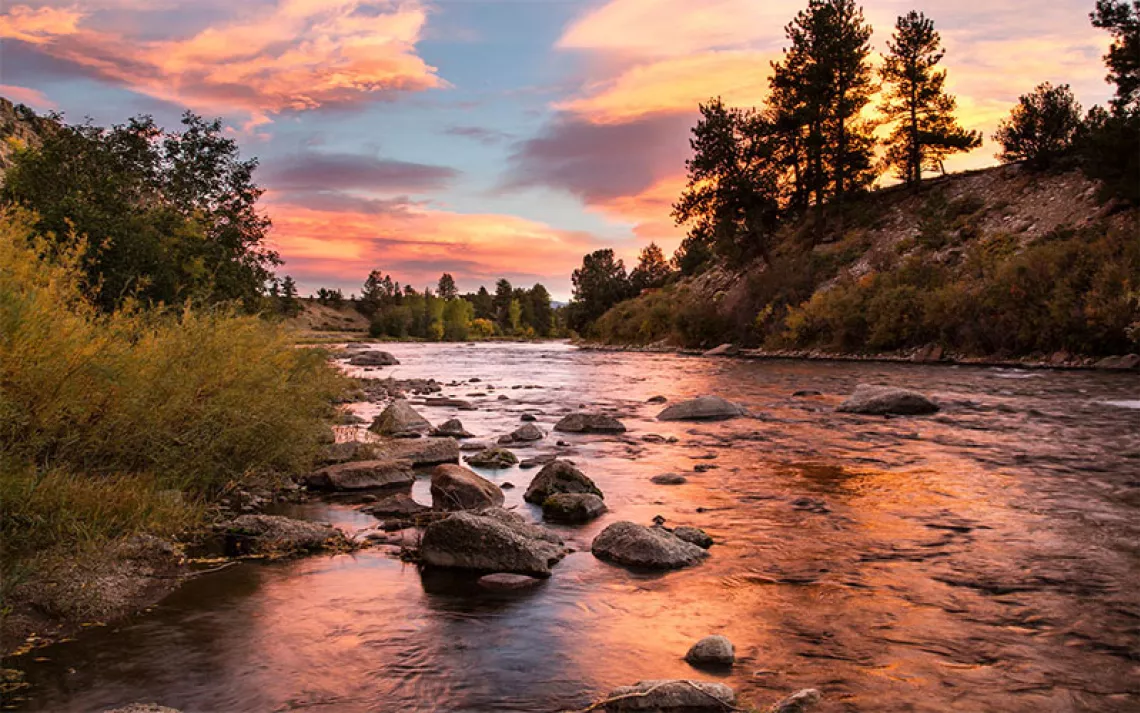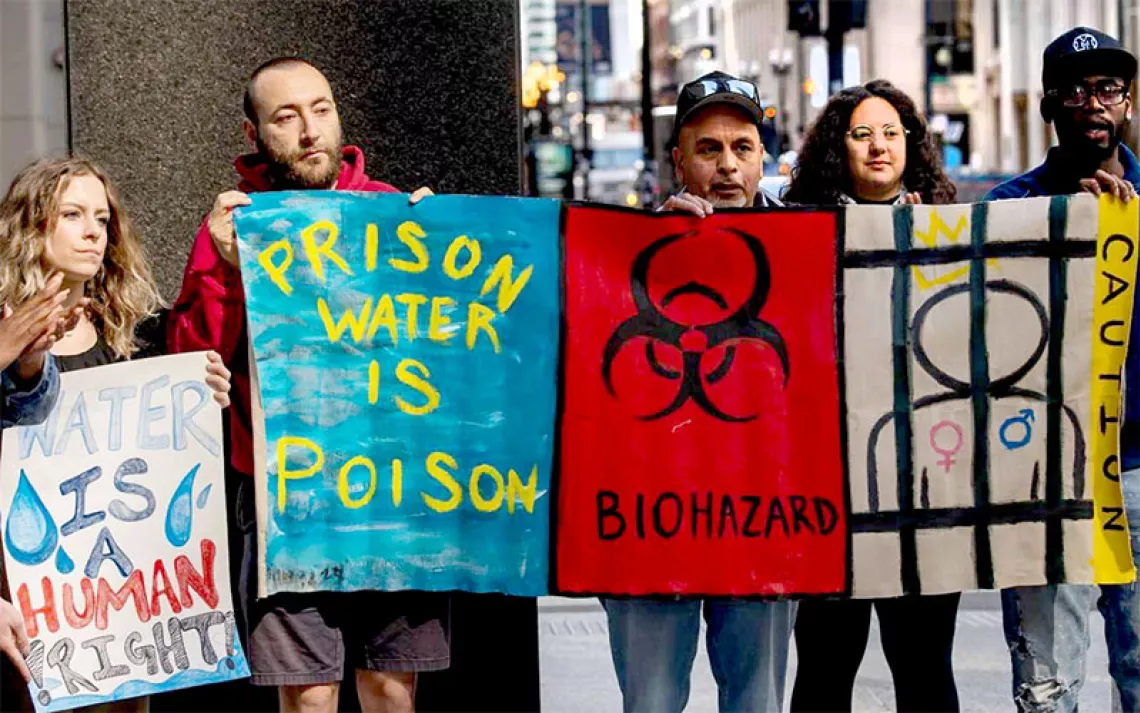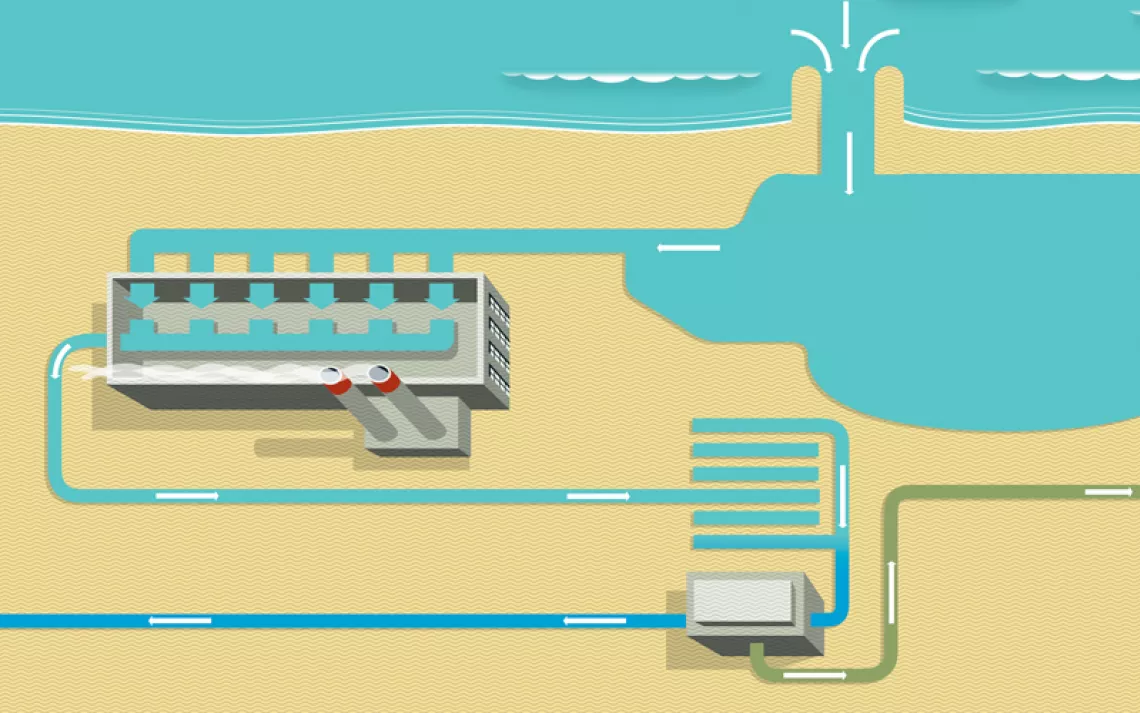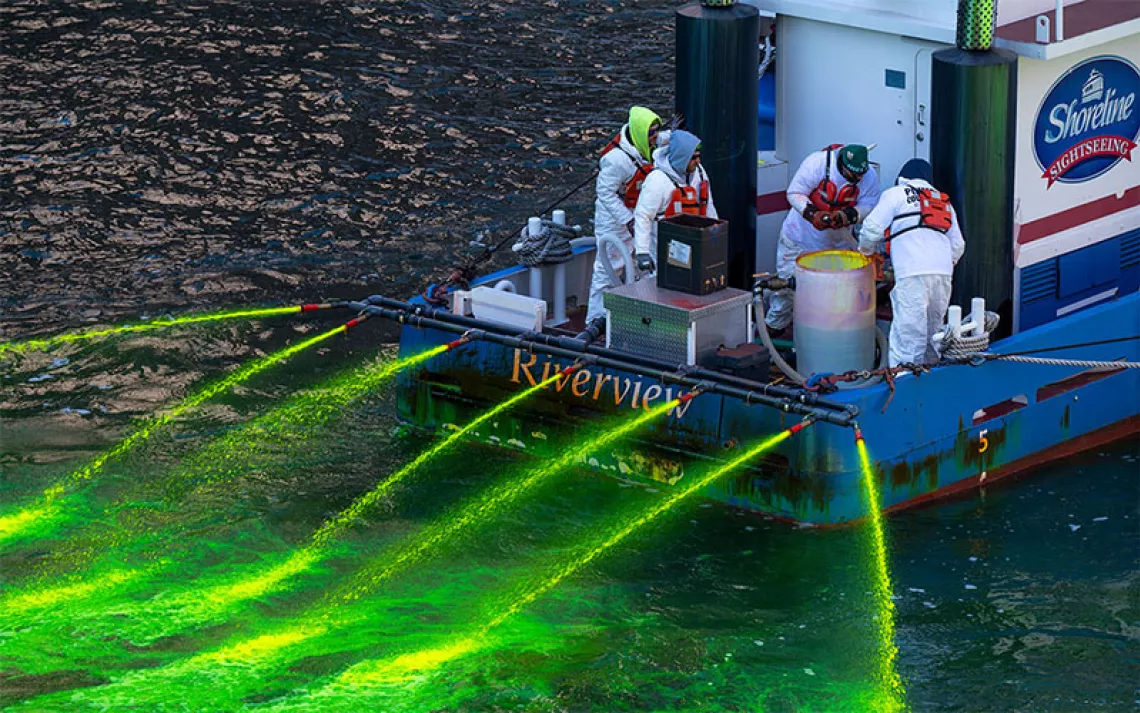Unjust Deserts
The World Day to Combat Desertification is all about dodging a global Dust Bowl.

Poster image from 2015 World Day to Combat Desertification | Photo courtesy of the United Nations Convention to Combat Desertification
The next time you stab a lettuce leaf and hoist it to your chops, consider that it was likely grown in the arid lands of the American West. Thanks to still-healthy topsoil, sufficient irrigation, and nearly perfect climatic conditions, your leafy greens make it from those fields to store to fork every day.
But the thirsty growing grounds of the Desert Southwest and similar landscapes on Earth are under siege, as the risk of land degradation due to drought, climate change, and human factors threaten to raze it of greenery and lay the ground bare.
The issue is being brought to the fore tomorrow on the World Day to Combat Desertification, a United Nations initiative designed to increase awareness and advocate for a reformation of land use practices.
Desertification? Let’s unpack that salad.
“Desertification is a fancy word for land that is turning to desert,” the Zimbabwean biologist, environmentalist, and farmer, Allan Savory told a rapt audience at a 2013 TED talk. Savory explained how desertification, which arises in part by overplanting and irresponsible grazing practices, contributes to the loss of 30 million acres of arable land each year—that’s a football field every second– and as Savory sees it, it’s a disaster waiting to happen. He’s in good company on that score.
“Food security is a critical issue that all of us must deal with now,” Yukie Hori, the spokesperson for the United Nations Convention to Combat Desertification, told Sierra by phone last week from her office in Bonn, Germany. Food and water insecurity gives rise to a constellation of social and political pressures, including migration, disease, and social unrest. Degraded land loses the power to store carbon, and exacerbates climate change in what becomes a vicious circle, affecting water resources and biodiversity. It all comes back to food.
“How shall we meet such a stark food demand when 52% of the land used for agriculture is moderately or severely affected by land degradation today? The bottom line is, we simply won’t have food without healthy land.”
Here’s the confluence of variables that have Hori and Savory so concerned: the world’s population is expected to reach 10 billion people by 2050 by some estimates. Hori says that the world will need to increase its food production by 70% to meet global nutritional needs. That’s a lot of mouths to feed on a shrinking land base. And it’s not just happening on the other side of the Atlantic.
Though most westerners are familiar with desertification in the Horn of Africa and the sub-Saharan belt called the Sahel region, the phenomenon visited the United States early last century when drought, overplanting, and fierce winds scraped the topsoil from the Great Plains states and sent it airborne: the Dust Bowl. It could happen again. California’s state climatologist recently told state officials that the current drought is on par with conditions that preceded the Dust Bowl, and the epithet has already been used to describe conditions in California’s Central Valley.
Fortunately, the threat can be neutralized and even reversed with simple practices, like responsible grazing, fallowing land, avoiding the use of pesticides, and planting trees and bushes between crops to combat erosion. Savory advocates strategic overgrazing to revive spent grasslands, a provocative solution he posits could return atmospheric CO2 to pre-industrial levels.
Even so, reforms are needed to maintain and return land to a healthy state.
“There’s no such a thing as a free lunch,” says Hori, echoing the theme of this year’s WDTCD. “Humans cannot survive without degrading land to a certain extent. But we don’t have to degrade it unnecessarily.”
It's time to repack that splendid greenery in your salad bowl. Hori says you should eat it heartily and mindfully this Wednesday, which is perhaps the best way to mark the day. “Think about where the food comes from, and whether the cost of the price of the food is higher than before, and ask, ‘Why is that?’”
The next time you stab a lettuce leaf and hoist it to your chops, consider that it was likely grown in the arid lands of the American West. Thanks to still-healthy topsoil and sufficient irrigation, your leafy greens make it from those fields to market to fork every day.
But the thirsty growing grounds of the Desert Southwest and similar landscapes on Earth are under siege, as the risk of land degradation due to drought, climate change, and human factors threaten to raze it of greenery and lay the ground bare.
The issue is being brought to the fore tomorrow on the World Day to Combat Desertification, a United Nations initiative designed to increase awareness and advocate for a reformation of land use practices.
Desertification? Let’s unpack that salad.
“Desertification is a fancy word for land that is turning to desert,” the Zimbabwean biologist, environmentalist, and farmer, Allan Savory told a rapt audience at 2013's TED conference. Savory explained how desertification, which arises in part by overplanting and poor grazing practices, contributes to the loss of 30 million acres of arable land each year—that’s a football field every second, and as Savory sees it, it's a disaster waiting to happen. He’s in good company on that score.
“Food security is a critical issue that all of us must deal with now,” says Yukie Hori, a spokesperson for the United Nations Convention to Combat Desertification, who spoke with Sierra by phone last week from her office in Bonn, Germany. Food and water insecurity give rise to a constellation of social and political pressures, including outmigration, disease, and social unrest. According to Hori, the degradation of land sets up a vicious circle in which the release of CO2 exacerbates climate change, which further impacts water resources and biodiversity, affecting our ability to feed ourselves.
“How shall we meet such a stark food demand when 52 percent of the land used for agriculture is moderately or severely affected by land degradation today? The bottom line is, we simply won’t have food without healthy land.”
Here’s the confluence of variables that have Hori and Savory so concerned: the world’s population is expected to reach 10 billion people by 2050 by some estimates. To meet global nutritional needs, Hori says we'll will need to increase food production by 70 percent. That’s a lot of mouths to feed on a shrinking land base. And desertification isn't just a phenomenon that occurs "over there."
Though most westerners are familiar with desertification in Central Asia, the Horn of Africa and the sub-Saharan belt called the Sahel region, the phenomenon descended upon the United States early last century when drought, overplanting, and fierce winds scraped the topsoil from the Great Plains states and sent it airborne: the Dust Bowl. It could happen again. California’s state climatologist recently told state officials that the current drought is on par with conditions that preceded the Dust Bowl, and the epithet has already been used to describe conditions in California’s Central Valley.
Fortunately, desertification can be neutralized and even reversed with simple practices, like responsible grazing, fallowing land, avoiding the use of pesticides, and planting trees and bushes between crops to combat erosion. Savory advocates strategic overgrazing to revive spent grasslands, a provocative solution he posits could return atmospheric CO2 to pre-industrial levels.
Even so, reforms are needed to maintain and return land to a healthy state.
“There’s no such a thing as a free lunch,” says Hori, echoing the theme of this year’s campaign. “Humans cannot survive without degrading land to a certain extent. But we don’t have to degrade it unnecessarily.”
As for that resplendent greenery in your salad bowl? Hori says the best way to mark the World Day to Combat Desertification is to eat it heartily and mindfully.
“Think about where the food comes from, and whether the cost of the price of the food is higher than before, and ask, ‘Why is that?’”
Follow Sierra on Facebook, Twitter, Pinterest, Instagram, and YouTube.
 The Magazine of The Sierra Club
The Magazine of The Sierra Club



